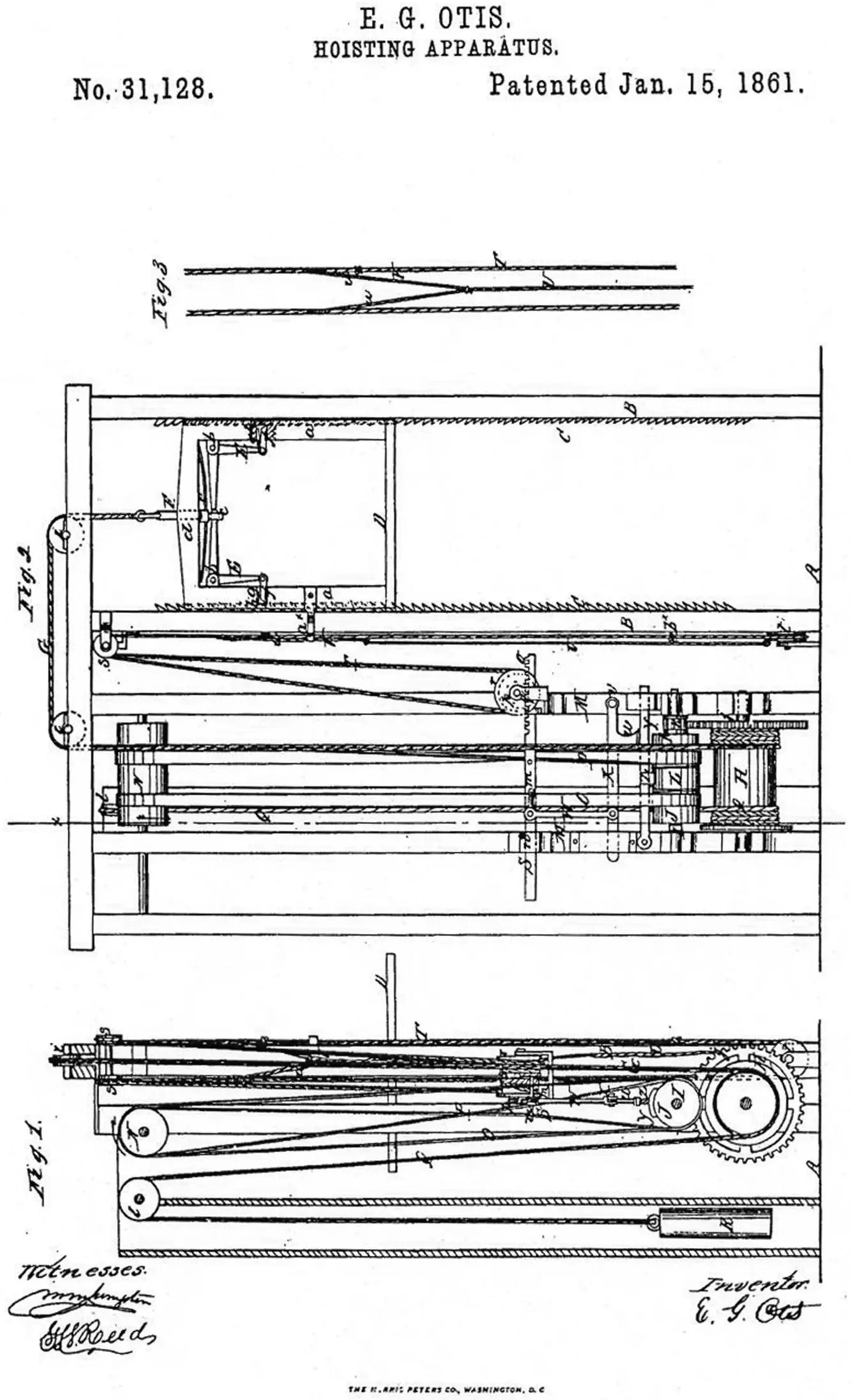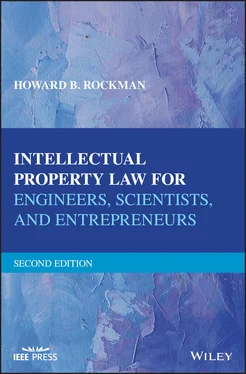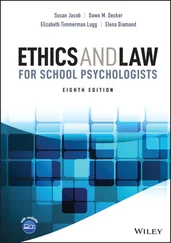In his early days, Otis designed and built a grist mill, but did not earn enough from the mill, so he converted it into a sawmill, which also was not successful. By that time, he had a family, and he started building wagons and carriages, which was within his capabilities. His wife then passed away, leaving him with two sons, one eight and the other still in diapers.
He then remarried, and moved to Albany, New York, working as a doll maker. He tired of taking all day to make only a dozen toys, and later invented and patented a robot wood turner that could produce bedsteads four times faster than could be done manually. His boss gave him a $500 bonus, and Otis then started his own business making bedsteads. He also started designing a safety brake that could stop trains instantly, and an automatic bread baking oven. As luck would have it, his business failed when the stream he was using as a water power supply was diverted by the city of Albany to be used as a fresh water supply.
Becoming disillusioned with Albany, Otis relocated to Yonkers, New York, in 1852 as the manager of an abandoned saw mill which was to be converted into a bedstead factory.
While cleaning up the factory, Otis wondered how he could lift all the trash, as well as heavy equipment and machinery to the upper levels of the factory. He knew that cables lifting hoisting platforms of the day often broke, and he and his workers were unwilling to risk their lives. So he and his two sons designed a safety elevator and tested it successfully. In the beginning, he thought so little of this invention that he neither patented it nor requested a bonus from his superiors. Ultimately, Otis did file for and obtained U.S. Patent No. 31,128 on January 15, 1861.
His safety device consisted of a used wagon spring attached to both the top of the hoist platform and the overhead lifting cable. Under ordinary circumstances, the spring was kept in place by the downward pull of the platform’s weight on the lifting cable. However, if the cable broke, the pressure on the spring was suddenly released, and the spring caused laterally extending ratchets to spring open in a jaw‐like motion. When this occurred, both of the ratchets moved laterally outward and engaged sawtooth ratchet‐receiving bar beams that Otis had installed on either side of the elevator shaft, bringing the falling elevator to a complete halt.
After the bedstead factory declined, Otis took the opportunity to make an elevator company out of his work, and he first named his company the Union Elevator Works. Later, the name was changed to Otis Brothers and Company. His new elevator business did not start out well, but the 1854 New York World’s Fair appeared to offer him a chance at gaining publicity. At the New York Crystal Palace, Otis constructed an elevator according to his designs, and ordered the only rope holding the platform on which he was standing to be cut. The rope was cut by a man handling an ax, and the platform fell only a few inches and then halted. His ratcheted safety locking mechanism had worked, and the public gained a greater willingness to ride in traction elevators, which then came into common usage and helped make present‐day skyscrapers accessible. After the World’s Fair, Otis continuously received orders, and he also developed different types of engines, such as a three‐way steam valve engine that could transition the elevators between up to down and stop rapidly.
Before Otis’ invention of the elevator brake, buildings only reached seven stories high, because elevators were considered too dangerous to ride in. The first elevator shaft actually was built in 1853, four years ahead of the first safety elevator built by Otis. Architect Peter Cooper was confident that a safe elevator would soon be invented, and designed New York’s Union Foundation Building with an internal cylindrical shaft, thinking that being the most efficient shape. Cooper opined that somehow somebody later on would develop an elevator to fit in the shaft. Otis later did design an elevator just for that building.
In 1857, the first Otis passenger elevator was installed at 488 Broadway in New York, following which the Otis elevator appeared in the Eiffel Tower in Paris and the Empire State Building in New York.
In 1890, an elevator was installed in the Washington Monument in Washington, D.C. In 1913, an elevator was installed by Otis Company in the 60‐story Woolworth Building in New York City, which at the time was the world’s tallest building.
In these modern days, it is virtually impossible for an elevator to plummet and kill passengers. Multiple steel cables hold the elevator’s weight, plus a multitude of different braking systems are installed to stop an elevator from falling if any of the cables do happen to snap. If the elevator does fall, there are shock absorbers at the bottom of the shaft, making it unlikely that death will result.
Here is an interesting note. We previously described Otis’ daring elevator safety demonstration at the World’s Fair in 1854. His demonstration was hyped by Phineas T. Barnum of circus fame.

7 The Patenting Process
7.1 WHO MAY OBTAIN A PATENT: INVENTORSHIP AND OWNERSHIP OF PATENT RIGHTS
In the United States, patents are granted only to the first and original inventor or joint inventors who are first to file a patent application describing and claiming the subject invention, or anyone asserting rights obtained from the inventor, such as an employer to whom the inventor(s) are obligated to assign their inventions, such as commonly found in employment agreements. It must be understood that one who merely recognizes the commercial merits of an existing product or idea, or who discovers technology in a previously written document, may not properly be awarded a patent. The invention must have been invented by the person or persons applying for the patent. In the United States, a corporation or business entity can pursue patent protection on a development independently of the inventor, if, as stated earlier, the inventors have agreed to assign patent rights to their employer, usually as a condition of employment. The patent assignment document is usually signed by the employee on the first day of employment, along with tax documents and confidentiality agreements.
An invention can be made by one, two, or any number of persons. Thus, many patent applications frequently name joint inventors. However, the following important rule must be kept in mind among the joint inventors. Unless there is an agreement or an obligation to assign the patent to one or a few of the inventors, or to a certain third party, such as the employer or a company set up by the inventors, each inventor will end up with the independent right to commercialize the invention, with no duty to account to the other inventor or inventors for his/her actions, or his/her royalties or revenues. This would be true regardless of the percentage of the patent any one joint inventor owns. Also, none of the joint inventors has the right to exclude any of the other joint inventors from practicing the invention, nor to prevent any joint inventor from granting licenses to others under the patent rights.
Normally, the question of ownership of an invention, and of the patent rights covering that invention, are handled in a corporate or large entity environment by obligating all of the inventors to transfer all of the rights in the patents to the employer by way of assignment from the individual inventors. However, if several inventors combine to produce an invention on their own, outside of a corporate structure, for example, it is extremely important that the rights, obligations, and limitations of the joint inventors vis‐à‐vis the invention be defined in a written joint development agreement before the patent application is even filed or ultimately issued to prevent problems in the future. In such cases, the number of inventors may form a separate new entity, such as their own corporation, LLC, or partnership, to which the patent rights are assigned. Then, it becomes the duty of the management of the new corporation or partnership to decide the direction of and limitations on commercialization of the invention, and the distribution of the rewards from that commercialization through prudent corporate management principles. If you find yourself in this situation, I strongly suggest discussing a joint development agreement with your patent professional.
Читать дальше













